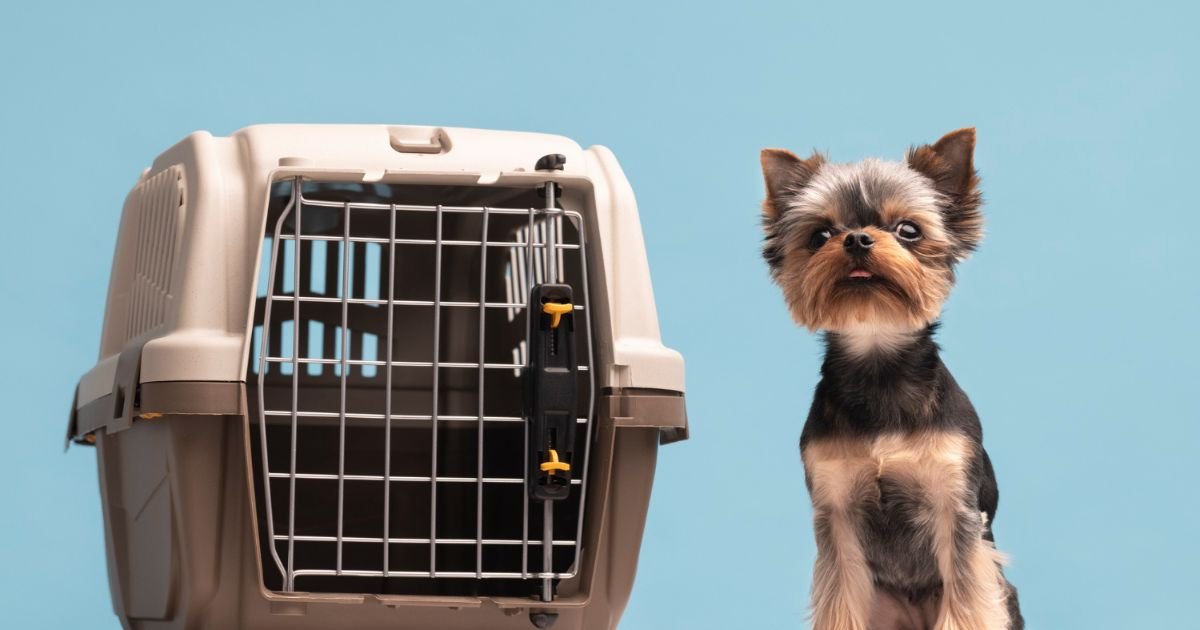When it comes to crating dogs, one of the contentious issues among pet owners and experts is whether dogs should wear collars while in their crates. The debate centers around the balance between ensuring a dog’s safety and providing comfort during confinement.
On one side of the debate, there are concerns about the potential risks associated with leaving a collar on a crated dog.
These risks include strangulation if the collar gets caught on parts of the crate, injuries from a paw getting stuck in the collar, or the dog chewing on the collar and swallowing dangerous parts.
Such incidents, although rare, can lead to severe injury or even death, making many argue against the use of collars in crates.
Conversely, others advocate for keeping collars on for identification purposes, especially in cases where a dog might escape or need to be quickly identified.
Collars are often seen as essential for control and quick access to a dog’s identification, which can be crucial in emergencies.
The importance of safety and comfort for crated dogs cannot be overstated. Crates are meant to be safe havens where dogs can relax and feel secure. Ensuring that the crate environment is free from potential hazards is a critical aspect of responsible pet ownership.
At the same time, the comfort of the dog is paramount. A crate should be a place where a dog can rest without feeling anxious or stressed. This means considering the dog’s temperament and movement within the crate and making decisions that prioritize their well-being.
In this article, we will discuss whether dogs should wear collars while in their crates or not.
The Risks of Collars in Crates
Ensuring the safety of our canine companions is paramount, especially when they are confined to a crate. While collars are essential for identification and control, they can pose significant risks when worn inside a crate.
Below, we delve into the potential dangers associated with this practice and explore why many experts advise against it.
Strangulation Hazards
Collars can become snagged on various parts of a crate, such as the bars or latches. This can happen unexpectedly and with little force.
Once caught, a dog’s instinctual struggle to free itself can tighten the collar, leading to strangulation.
Tragically, this can result in severe injury or even death. The risk is not worth taking, especially since these accidents can be prevented by removing the collar before crating.
Chewing and Swallowing Dangers
Boredom or anxiety can lead dogs to chew on their collars, which presents a choking hazard if pieces are ingested. This behavior can cause intestinal blockages or internal injuries, requiring emergency veterinary care.
It’s crucial to monitor a dog’s behavior and remove any items that could be chewed and swallowed, particularly when they are unsupervised in a crate.
Skin Irritation and Health Concerns
Continuous wear of a collar, especially in the confined space of a crate, can lead to skin irritation, rashes, and hair loss.
This condition, known as collar rash, is caused by the friction between the collar and the dog’s skin.
It can be uncomfortable and may lead to more severe skin conditions if left untreated. To prevent these issues, it’s advisable to give your dog’s neck a break from the collar while they are crated.
While collars are indispensable for managing dogs outside the crate, they can become hazards within the confined space of a crate.
By understanding these risks and taking preventative measures, we can ensure the safety and well-being of our pets.

Safe Crating Practices
Creating a safe crating environment is essential for the well-being of your dog.
It involves more than just placing them in a confined space; it’s about ensuring they are comfortable, secure, and identifiable, even without the traditional collar.
Let’s explore how to achieve this.
Crate Training Without Collars
Even without a collar, it’s crucial to identify your dog. Microchips and tattoos are permanent solutions, while tags and written information attached to the crate can serve as temporary measures.
These methods ensure that, in case of an emergency, your dog can be identified quickly and safely.
Comfort and Safety Measures
The crate should be a sanctuary for your dog. Ensure it’s the right size, placed away from direct sunlight, and in a low-traffic area to minimize stress.
Inside, provide comfortable bedding, safe toys, and proper ventilation to create a cozy environment.
Remember, the crate should never be used as a punishment but as a peaceful retreat.
By adhering to these practices, you can crate train your dog effectively, ensuring their safety and comfort even in your absence.
Alternatives to Collars in Crates
Ensuring the identification of a crated dog is crucial, yet traditional collars can pose risks. Fortunately, there are safer alternatives that provide peace of mind without compromising the dog’s safety. Let’s explore these options.
Identification Tags and Microchips
Microchips offer a permanent identification solution, embedded just under the dog’s skin, typically between the shoulder blades.
They store essential contact information retrievable by shelters and vets with a scanner.
Identification tags can be attached to the crate itself, providing immediate visual ID without the need for the dog to wear anything.
Safer Options When a Dog Must Wear Something
For situations where a dog needs to wear identification or be secured within the crate, harnesses, and breakaway collars present safer alternatives.
Breakaway collars are designed to release under pressure, preventing strangulation if the collar gets caught.
Incorporating these alternatives can significantly reduce the risks associated with traditional collars, ensuring that your dog remains safe and identifiable even when crated.
Expert Opinions
When it comes to the safety of dogs in crates, expert opinions and real-life case studies offer invaluable insights.
Veterinarians, as animal health experts, provide guidance based on a combination of clinical experience, research, and an understanding of canine behavior.
Meanwhile, case studies of actual incidents serve as powerful reminders of the potential consequences of our choices and the importance of following best practices.
Veterinarians generally advise against leaving collars on dogs in crates due to the risks of strangulation, choking, or suffocation if the collar gets caught.
They recommend alternative forms of identification such as microchips or tags attached to the crate.
Additionally, experts suggest regular checks of the crate’s condition to ensure there are no protrusions or sharp edges that could catch on a collar.
By heeding the advice of veterinarians and learning from real-life cases, dog owners can make informed decisions about the use of collars in crates, prioritizing the safety and well-being of their furry companions.
Final Thoughts
In the journey to ensure the safety and comfort of our dogs, especially when they are crated, we have explored various aspects of whether dogs should wear collars in crates. We’ve examined the potential risks, such as strangulation hazards, chewing and swallowing dangers, and skin irritation issues. We’ve also discussed safe crating practices, including crate training without collars and setting up a crate for optimal safety and comfort.
Alternatives to collars, such as identification tags, microchips, harnesses, and breakaway collars, have been presented as safer options. Expert opinions have reinforced the importance of these measures. Ultimately, the decision to collar or not to collar a dog in a crate should be made with the dog’s best interest in mind, considering all the information and expert advice available.

